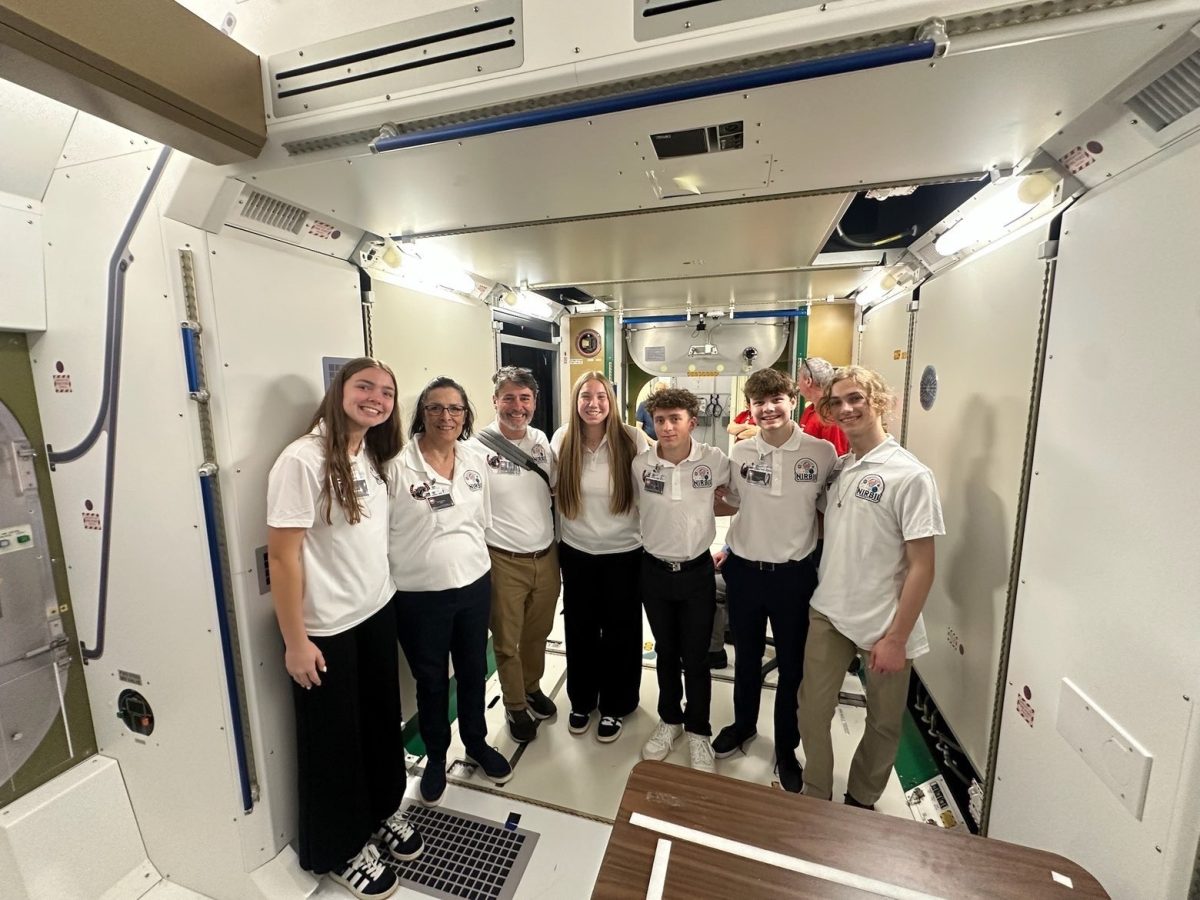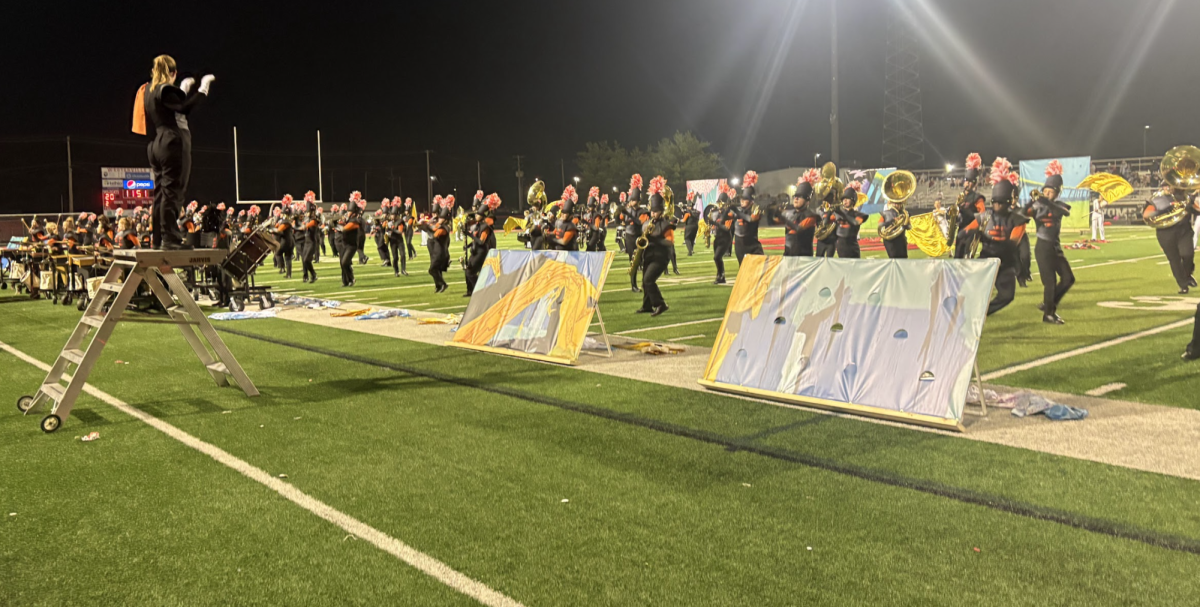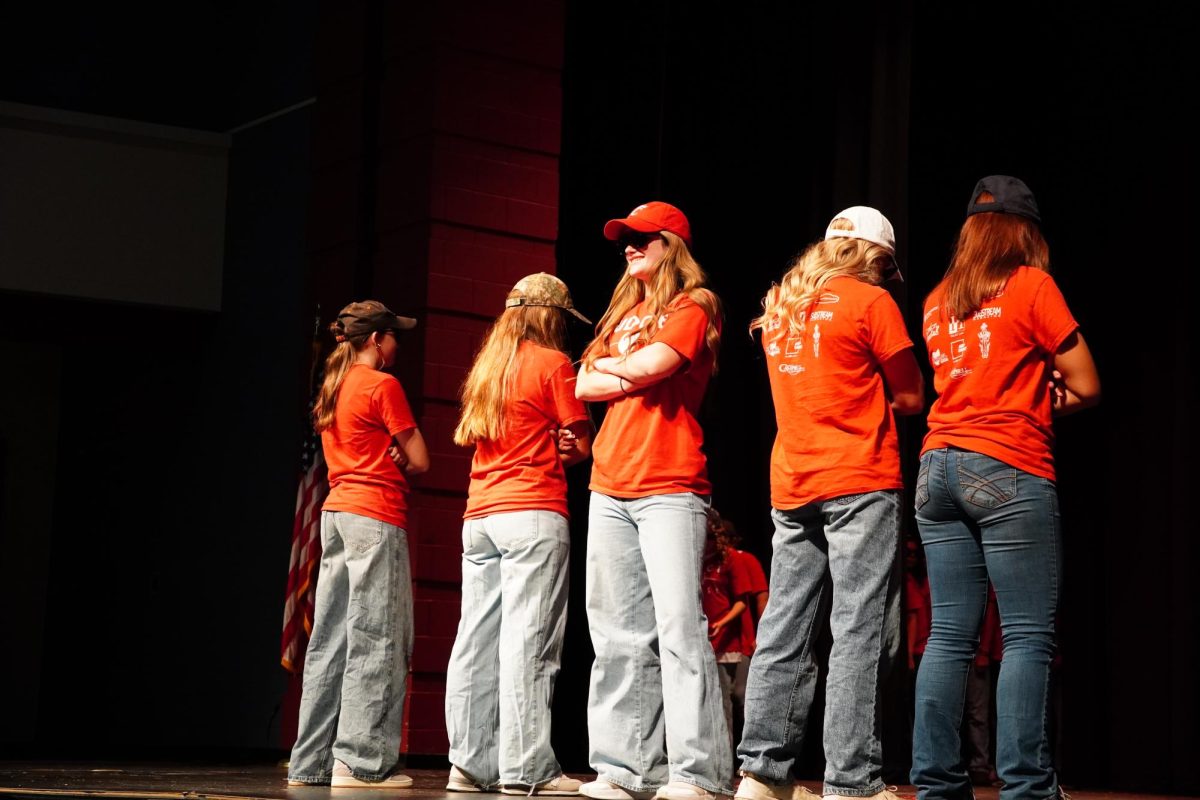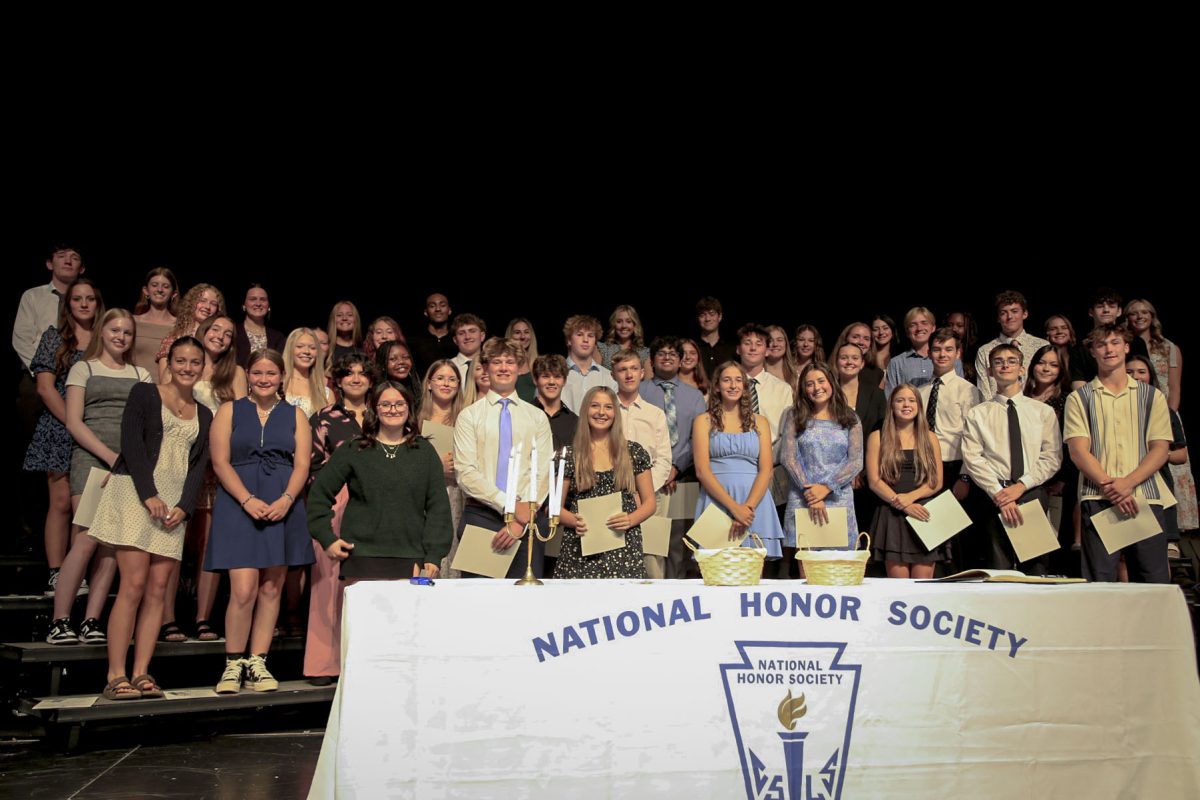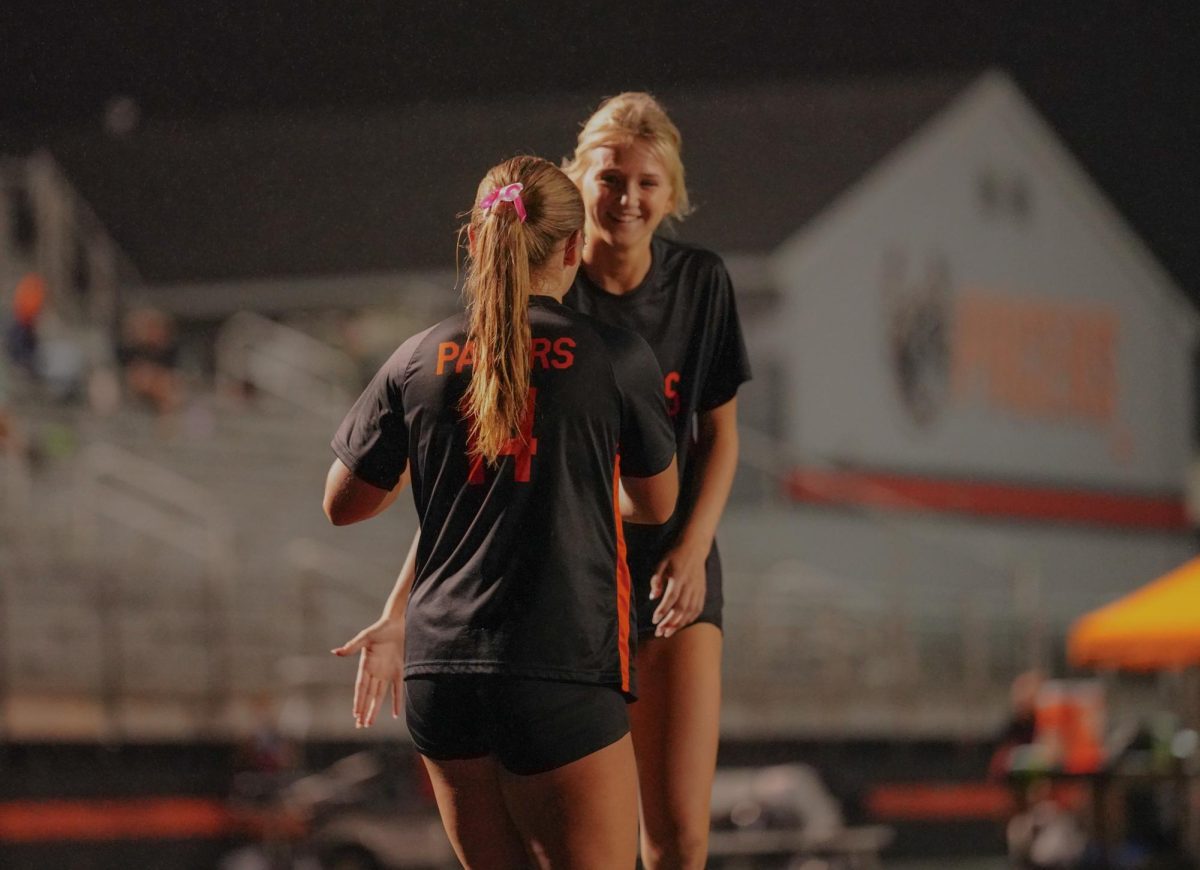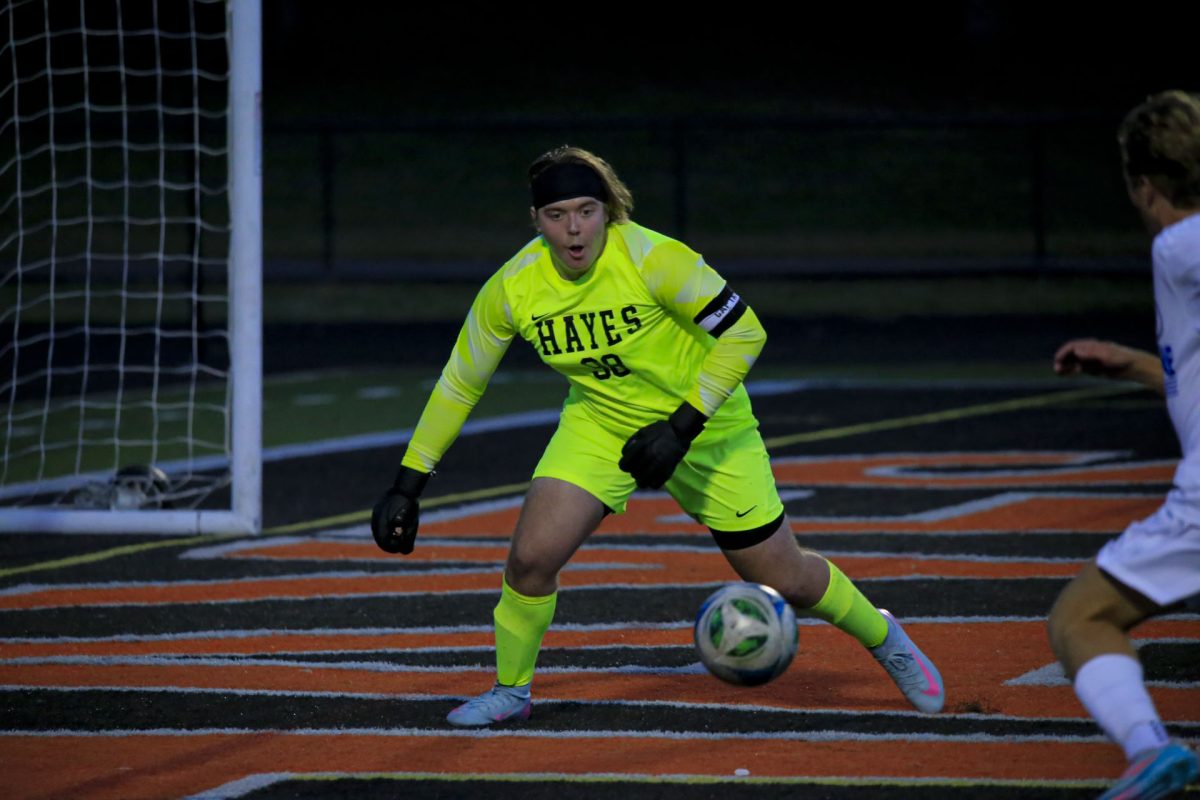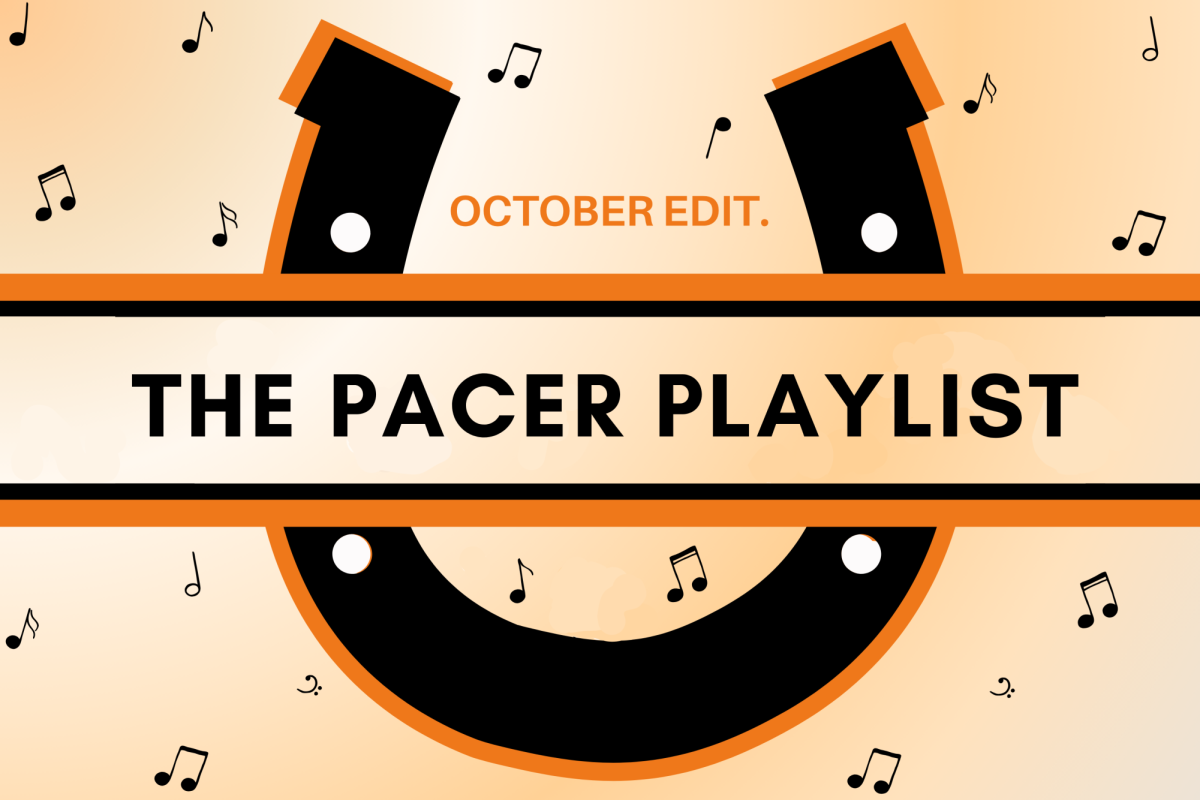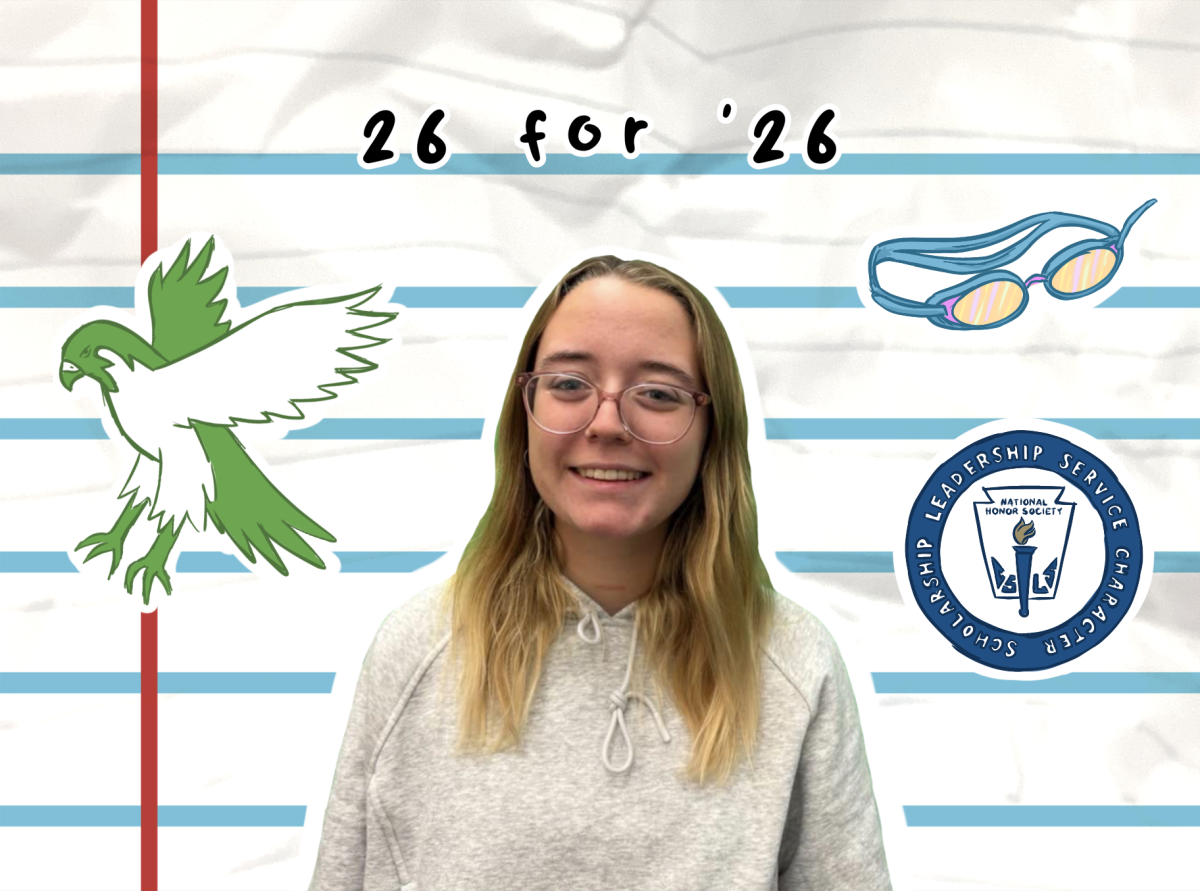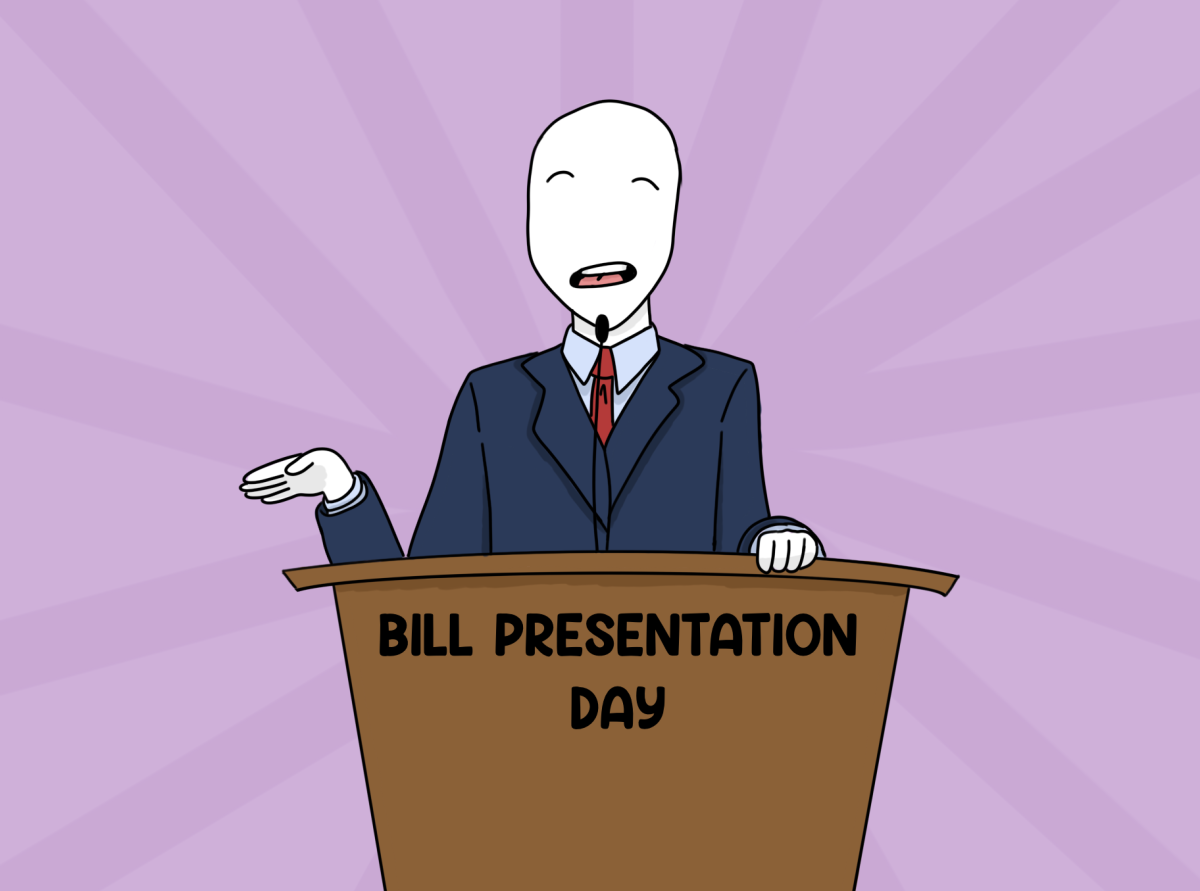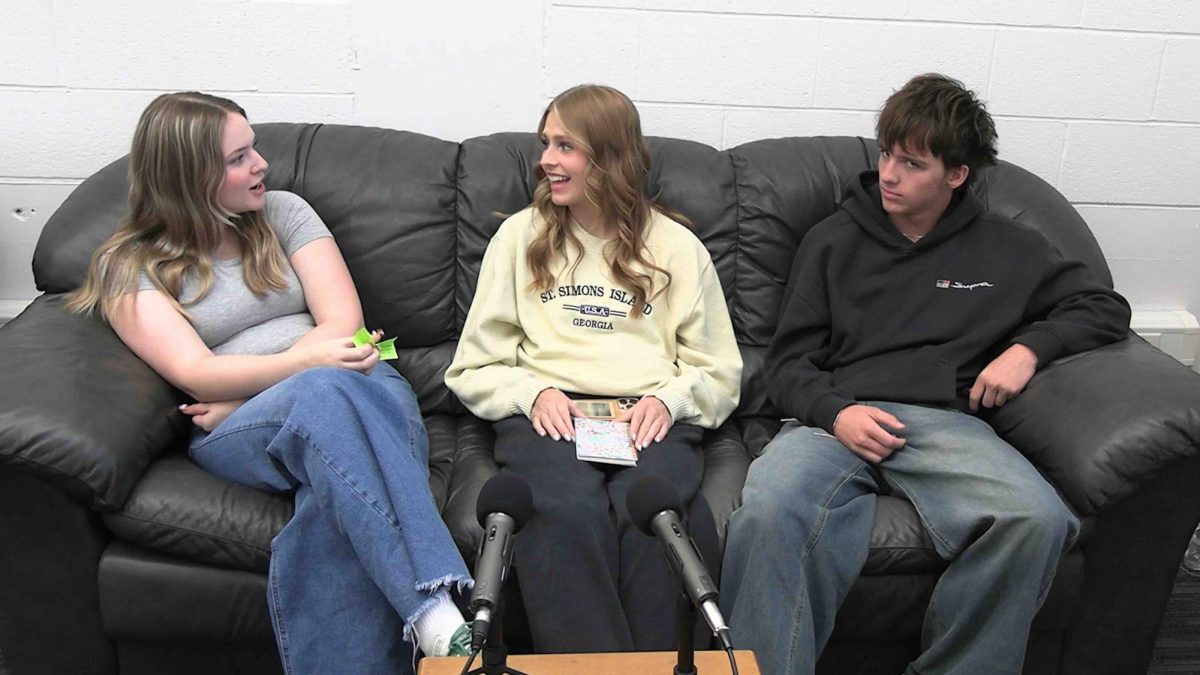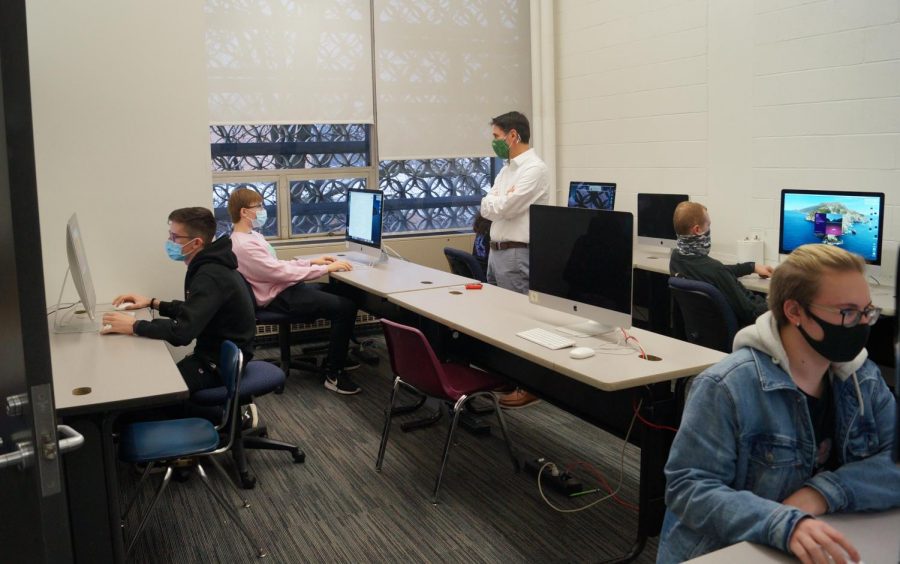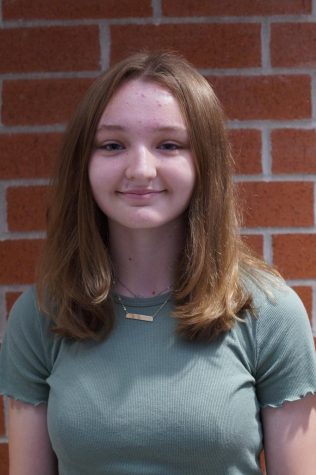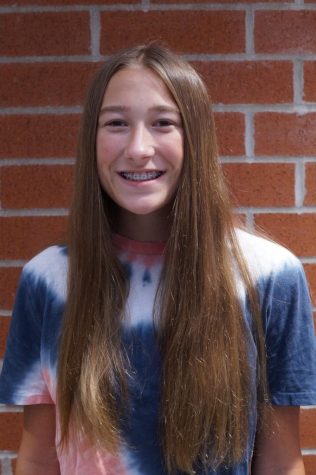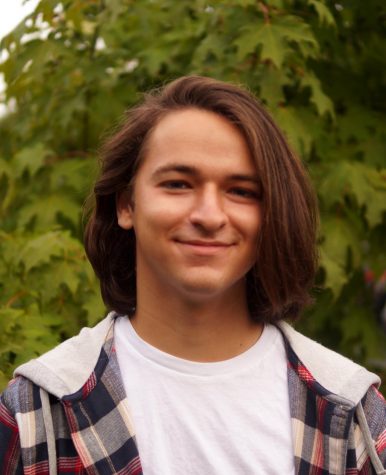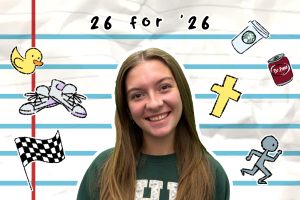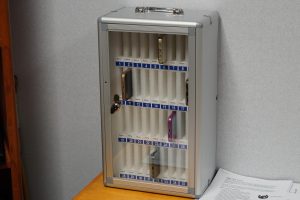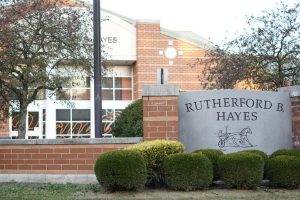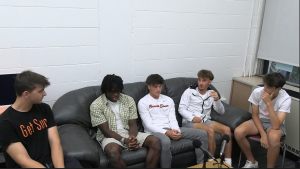Hayes Cinematics class pushes through Covid-19 restrictions
Members of Hayes Cinematics work on individual projects in the video production computer lab. Covid-19 restrictions have prevented students from collaborating in groups like they have in previous years.
January 15, 2021
The Hayes Cinematics class, formerly known as D-Town, is working to alter their curriculum in order to cope with the rules put in place for Covid-19.
One of the biggest changes this year is the size of the class. Adviser Tom Hering is making adjustments to keep the class running smoothly, even though student enrollment is smaller than usual.
“We had 30 people at the beginning of the summer in the class,” Hering said. “I’m down to 12 or 13 because people just didn’t have the time or energy for it.”
Hering said students seem less excited this year because they can’t film with friends like they did in previous years. Instead, most students are working to create films independently or in very small groups.
“The biggest difference is that we used to have groups of about four, but now it’s mostly people working by themselves or in groups of two,” said senior Dominic Boeriu, who is a returning Hayes Cinematics member.
Boeriu said that it is easier to get focused on projects, but harder to get work done when working solo. He tends to use his little brother in films and does both the filming and editing by himself.
The Hayes Cinematics class focuses on teaching students how to film with production-quality equipment and how to use Adobe Premiere, which is industry-standard editing software. This year, students check out cameras to film on their remote learning days and use their in-person school days to edit their films in the classroom.
Hering said that although the days are organized differently, it is still taking roughly the same amount of time to create a short film. However, the process of creating projects is more difficult because students must plan their projects adequately to make effective use of their time in school.
“The production of the projects is getting slowed down,” Hering said.
Hering attributes the decreased speed of projects to most students being unable to access Adobe Premiere, a subscription-based software, at home to edit their videos. Other filming considerations include safety, like keeping distance between actors in order to film without masks, using family members as actors, or splicing several clips to edit actors into their videos.
These changes have also had an impact on the community of the group. According to Hering, there seems to be a loss of energy as a natural result of students working by themselves or in very close-knit pairs, which is very different from the collaboration and excitement that occurred as groups merged and shifted in previous years.
“[Last year] was these really tight groups of people…who were these wandering bundles of energy around the building,” Hering said. “Now, it’s just sort of lonely and quiet.”
Still, Hering acknowledges an unexpected benefit to this change in group dynamics: students have been more focused and productive this year.
“[Before] they had each other to waste time with, whereas now they’re much more focused all the time because they’re working alone,” Hering said.
Through all of the changes, Hering is finding new ways to challenge his students, like asking them to put together video montages for existing projects using silent footage.
“It’s only because of Covid that now I realize how I can push them to be creative with this found footage,” Hering said.
During the first semester, the class collaborated on a virtual assembly video that was shown throughout the district on Veteran’s Day. Students worked to film it outside of school hours and edited it in class with Hering’s help.
However, Hering said that the editing aspect of film production is one of the hardest parts to teach in the hybrid model because of the complexity of the software.
“Second and third year students [are] tapping away and they know all the shortcuts and…suddenly a movie is there,” Hering said. “The first years…it takes them two days to do what [older students] just did in seven minutes.”
For students who aren’t involved in the Hayes Cinematics program, the most visible change, though, is that the group no longer hosts group screenings during lunch periods. Instead, films are just being posted to the Hayes Cinematics YouTube channel for other students to watch on their own.
While Hering has bounced around ideas for ways to show the videos in a Covid-safe method this year, he said he hasn’t hit on the perfect solution yet. One option he is exploring would be potentially broadcasting the videos during lunch periods, since they are significantly longer this year.
It’s an option that many students say they would be open to.
“I’d probably check it out, especially during lunchtime when I have nothing to do,” sophomore Julia Young said.
While Hering is open about the struggles the Hayes Cinematics program is facing this year, he is also optimistic that the complications resulting from Covid-19 are temporary. He said he continually tells his students to not lose hope.
“This could be so much different in another year,” he said. “Please come back again.”


